Throughout history, militaries the world over have sought victory through high-intensity force-on-force battles against their adversaries in the hope that a decisive battlefield victory would lead to strategic success. However, despite its allure, decisive battlefield success has been inconsistent in supporting the achievement of strategic outcomes because of the failure to link tactical military actions with the strategic political objectives. Operational art, a relatively recent concept seeks to bridge the divide between tactical actions and strategic objectives through the alignment of ‘ends’ (strategic objectives) with ‘ways and means’ (tactical actions and capabilities) to ensure military action delivers outcomes which contribute to achieving strategic objectives.
This essay argues that the ongoing desire of Western militaries to seek a decisive battle or effect that will defeat an adversary quickly and efficiently is not at odds with the concept of operational art if operational art is used appropriately and it is determined, through a combination of rigorous planning and application of the commander’s experience, that a decisive battle or decisive effect is the most suited ‘way’ for achieving strategic ‘ends’. Therefore, it is contended that these concepts are complementary in nature; however, the achievement of decisive strategic outcomes through the application of military power is challenging and often difficult to achieve. While decisive battle and decisive effects are complementary to operational art, the ongoing desire to employ these ‘ways’ by Western militaries requires careful consideration in the contemporary strategic environment and may not actually be suitable options for a number of reasons including appropriateness, resource limitations and the potential second and third order effects that might result from their use.
Operational art
The basic premise of operational art is to translate abstract strategic political objectives into physical military actions that commanders can accomplish.[1] It seeks to link war and politics in line with Clausewitz’s assertion that war is “a continuation of political intercourse, carried on with other means”.[2] The principle role of operational art is to “reinforce the unity of war by establishing the strongest possible connection between strategic ends and tactical means”.[3] The concept of operational art is attributed to the Soviets who, during the interwar period, developed an understanding that strategic objectives could only be achieved through the cumulative successes of multiple military operations.[4] This focus on the “intersection of strategy and tactics” led to the creation of a new concept that Mikhail Tukhachevsky called operativnoe iskusstvo¸or operational art, which rejected the previous emphasis on achieving victory through a single decisive battle of annihilation.[5] Tukhachevsky sought to create, through the ‘deep operations’ concept, an ability to field self-contained, manoeuvrable forces alongside increasingly sophisticated military technology that could be coordinated by commanders to provide “a total escape from the impasse of World War I positional warfare”.[6] Despite being executed in 1937 during Stalin’s purge of the Soviet Army, Tukhachevsky’s ideas and the ideas of other operational art advocates had been embedded into Soviet military doctrine and by the end of World War II. While avoiding any reference to ‘deep operations’ Soviet operational art achieved the successes promised by the interwar theorists.[7] The work conducted by the Soviets in operational art underpinned development of similar doctrine in many Western militaries when they began to embrace the concept in the 1980s and where the concept, whilst evolving, remains firmly embedded to this day.[8]
Since its earliest conception, operational art has continued to evolve alongside the character of warfare which also continues to evolve due to changes in technology, methods of warfighting and the operating environment.[9] The United States (US) military, for example, defines operational art in its joint doctrine as “the cognitive approach by commanders – supported by their skill, knowledge, experience, creativity and judgement – to develop strategies, campaigns, and operations to organise and employ military forces by integrating ends, ways and means”.[10] The Australian Defence Force (ADF) takes a similar approach to the US defining operational art as the “skilful employment of military forces to attain strategic goals through the design, organisation, sequencing and direction of campaigns and major operations”. These definitions view operational art as a mechanism for linking available resources and capabilities (means) with actions (ways) to attain a desired strategic end-state (ends) while considering the possible costs (risk) of military action.[11] This view of operational art is not tied to a particular ‘level’ of war; therefore, it is assessed that operational art enables commanders at all levels to consider how tactical actions might have strategic consequences.[12] Operational art encourages commanders to exercise their creativity, open-mindedness and inject their personality into developing appropriate plans and context-appropriate course of actions that meet the needs of the individual situation.[13] More importantly, it enables tactical actions to be linked, whether in some small part or through a decisive effect, to the achievement of strategic objectives.
To assist commanders in applying operational art, militaries have developed planning or problem-solving frameworks for use in conjunction with an individual commander’s experience, leadership, creativity and adaptability to determine appropriate actions and reactions to events in the operational environment.[14] The US use the Joint Operation Planning and Execution System, the British utilise the NATO Operational Planning Process, and the ADF use the Joint Military Appreciation Process (JMAP).[15] Contemporary application of operational art requires such frameworks to support the creativity and experience of individuals for ensuring the course/s of action developed to implement military action are appropriate and tied to strategic outcomes.[16] The holistic approach to operational art taken by Western nations enables the concept to be used across the spectrum of conflict.[17] It is assessed that this modern approach to operational art provides the concept with ongoing relevance, ensuring military power can be appropriately employed by ensuring alignment of ‘ends, ways and means’. Two potential ‘ways’ for achieving ‘ends’ are the decisive battle and the decisive effect.
Decisive battles and decisive effects
The allure of victory through a single decisive battle remains strong among many militaries throughout the world with nations seeking ‘ways’ to achieve the elusive decisive battle victory. John Cross defines decisive battle as “a single battle or campaign by a force that compels the enemy to accept the political or social changes desired and terminate the conflict”.[18] It is these political and social changes that are important to nations seeking victory in conflict, yet often strategic change does not occur quickly nor as a result of decisive military action in isolation. Rather, strategic change is brought about through a combination of military action and other elements of national power including diplomatic, informational and economic. During World War II (WWII), Helmuth von Molkte the Elder developed a German concept of warfighting known as ‘strategic envelopment’ that fused operational and tactical requirements through a combination of movement and combat, culminating in several armies converging geographically for a decisive battle of annihilation.[19] This concept developed further to become the blitzkrieg and while Germany had some decisive tactical success with this concept, they eventually lost the war to the Allies due to their failure to link these decisive tactical actions with either their strategic objectives or other elements of national power to achieve strategic success.[20] Contemporary writers argue the idea of victory through decisive battle is becoming a less likely ‘way’ of achieving strategic outcomes for a number of reasons, however decisive effects can continue to impact at the strategic level.[21]
While decisive battle may be a less likely ‘way’ of employing military power in the contemporary environment, Western militaries continue to seek decisive effects which can contribute to achieving strategic outcomes. A decisive effect differs from decisive battle because, as defined by James Dubik, a decisive effect is “an action or actions that produce a definitive result and settle a matter”.[22] The key differentiator between a decisive effect and the previously discussed decisive battle is the lack of reference to changes at the political or social level. It is assessed that Dubik’s definition is broad in nature, can be applied tactically or strategically, and supports operational art as a ‘way’ of achieving outcomes. This definition also acknowledges that decisiveness at the tactical level may not settle a matter, however when linked to strategic outcomes it can establish conditions conducive for other actions (military or non-military) to settle an issue and bring about desired political or social change.[23] The US experience in Vietnam demonstrates that winning decisive tactical battles is meaningless unless those battles are aligned to strategic outcomes. Despite the US and its allies accumulating numerous decisive tactical victories, they were unable to achieve their desired strategic goals (militarily or otherwise) resulting in the eventual abandonment of South Vietnam with no significant change to the political or social status quo.[24] It is assessed that there was a failure to effectively apply operational art to link tactical action with strategic objectives, much like the German experience during WWII. Operational art is required to link the two; without it campaigns and military actions, no matter how decisive, are merely a “series of events with no connection between them”.[25] Nations seeking decisive effects have also sought to rely on technology to achieve their desired ends, but this also has achieved inconsistent results.
Technological advances have often been viewed by nations as the panacea for delivering a decisive effect, yet their strategic results have been mixed. The steam engine, the rifled gun barrel, and tanks were viewed by nations as ‘game changes’ for achieving quick and decisive outcomes. The introduction of air power and the atomic bomb was also viewed as a way to restore decisiveness to warfare and produce a swifter, more humane outcome.[26] Yet, these technological advancements, and many others, failed to deliver consistently decisive effects in battle to support strategic outcomes. A clear example of the use of operational art and decisive effects was the US dropping atomic bombs on Hiroshima and Nagasaki in WWII. These actions resulted in a decisive outcome for the US in the form of Japan’s capitulation. The Japanese Emperor, when calling a halt to the war, cited the atomic bomb as a key reason for the halt (alongside his loss of faith in the Imperial Army and a fear of civil disorder and destruction of the imperial institution due to ongoing Allied blockade and bombardment).[27] The atomic bombs also proved to be a defining moment for the Japanese Emperor who had, up to this point, been dis-empowered by the Imperial Army. However, these US actions provided him with the opportunity to exercise decisive legitimate authority over Japan’s war effort; it also enabled him to negotiate the terms of Japan’s surrender with the US.
Airpower has also demonstrated mixed results in achieving decisive effects. During Operation Desert Storm in the Gulf War I the overwhelming use of airpower by the US and its allies created decisive tactical effects which resulted in the complete strategic collapse of the Iraqi’s ability to resist and elicited their compliance with UN Resolutions.[28] Yet despite its strategic impact in the Gulf War I, airpower has proven strategically indecisive in other conflicts. In Vietnam, despite the US’ technological overmatch, its Linebacker and Rolling Thunder aerial bombing campaigns failed to achieve decisive outcomes against the North Vietnamese, because the Allies did not use operational art to fully understand the will of their adversary and they failed to effectively align US ‘ways’ with their desired outcomes.[29] These examples serve to highlight that airpower can deliver decisive effects, however they also importance of aligning tactical ways with strategic ends regardless of the ‘way’ conflict is fought or the technology and capabilities available to fight. It is assessed that, as the contemporary strategic environment becomes more complex, uncertain, volatile and ambiguous, and the character of war continues to change, the use of operational art by military commanders to align ‘ends’ with ‘ways and means’ (decisive battle, effect or otherwise) will become more important than ever.
Operational art, the decisive battle, and decisive effects in the contemporary strategic environment
The contemporary strategic environment facing Western nations is becoming increasingly complex and volatile due to the impacts of rising global disorder, rapid technological change, and challenges from adversaries across the military’s operating domains and the spectrum of conflict.[30] The US National Defense Strategy clearly articulates an understanding of the changing strategic environment, providing clear strategic guidance in order to “compete, deter and win” in this environment.[31] The Australian Government’s recently published 2020 Defence Strategic Update also recognises the changing strategic environment and the range of factors which will challenge Australia’s ability to achieve its national strategic objectives.[32] The Update states:
“Our region is in the midst of the most consequential strategic realignment since the Second World War, and trends including military modernisation, technological disruption and the risk of state-on-state conflict are further complicating our nation’s strategic circumstances.”[33]
This update sets out government’s expectations for the ADF and it now requires military commanders to translate this strategic guidance into tactical actions that are “coherently arranged in time, space and purpose” which, Scott argues, is the “essence of operational art”.[34] It is assessed that, if operational art is used effectively, military commanders can appropriately align ‘ends, ways and means’ because they have a clearer understanding of the desired strategic end-state and what capabilities and methods are available to achieve that end-state. This understanding is arguably more important in the contemporary environment than at any time previously due to a combination of the complex, interconnected strategic environment and the changing, unique character of each war or conflict.
Each conflict has a unique character due to the impact and influence of a range of factors. Political objectives vary with each conflict, therefore the methods of warfighting should vary to achieve those objectives.[35] Clausewitz rightly identified that conflict must vary “with the nature of their motives and of the situations which give rise to them”.[36] Therefore, each conflict requires individual consideration in applying military power as there is no ‘one size fits all’ approach. Accordingly, political and military leaders need to clearly understand the purpose behind, and potential ramifications of, the decision to use military force in that individual circumstance. Once this is understood, military leaders then apply operational art to the military planning process (using JMAP or similar) to identify the individual character of the conflict to ensure ‘ends, ways and means’ are appropriately aligned. This is achieved by developing and implementing an appropriate strategy and supporting plan which have considered, among other aspects, the type of military engagement (ie where it sits on the spectrum of conflict), the operational environment, the adversary, available capabilities and resources (including constraints and limitations for both friendly and adversarial forces), and whether offensive or defensive operations are necessary.[37] Failure to effectively apply operational art to the military planning process would result in military action becoming a series of unrelated events with no connection between them and no linkages to stated strategic objectives.[38] Application of operational art also ensures the Western military desire to achieve a quick and decisive outcome does not override the practicalities of applying appropriate military force. Operational art helps to reduce the chances of the “tactisation of strategy” which may occur due to the ongoing desire to pursue decisive battle or effects.[39] It further ensures careful consideration is given to the ‘ways’ modern Western militaries use military force in the pursuit of strategic political objectives.
As discussed previously, decisive battle and decisive effects are not at odds with the concept of operational art. It is assessed however, that in the contemporary strategic environment, fighting a decisive battle is unlikely to be the most appropriate ‘way’ to pursue strategic objectives because of the potential for it to generate serious and negative second and third order effects. Additionally, as Cross argues:
“military power can solve problems quickly, but the result generally persists for a limited time. Alternatively, the other elements of national power take time to become influential, but can result in a lasting peace”.[40]
Consider the current great-power competition between the US and China; both nations have considerable military power they could bring to bear in pursuit of their respective political objectives should they choose. However, it is unlikely that either nation would seek to fight a decisive battle to resolve this competition because of the cost (casualties, economic, diplomatic, political, social etc) associated with such action. Additionally, the ‘ways’ used to achieve any decisive effects would also require careful consideration. For example, it assessed as unlikely that the US would employ nuclear weapons against China (due to the widescale repercussions of such action). It is most likely, in the author’s opinion, that the US will use its military power in support of the achievement of national strategic objectives through the use other national power levers rather than seeking to engage its military in decisive battle.
Other Western nations should also adopt a similar approach to the US in their application of military power in the contemporary environment ie. military action in support of other elements of national power working to achieve political outcomes. The interconnectedness of the global economy, the wide variety of adversaries, and the globalised nature of conflict do not lend themselves to victory in a single decisive battle.[41] Rather, Western nations with neither the military size and resources to undertake decisive battle operations nor the desire and capability to manage any undesired consequences of such action should consider employment of various other ‘ways’ to achieve their respective ‘ends’. As stated above, the ‘ways’ adopted by Western nations, irrespective of the size of their military power, need to align with their ‘ends’ which can be achieved through the application of operational art in military planning.
Conclusion
The ongoing desire of Western militaries to seek a decisive battle or effect that will defeat an adversary quickly and efficiently is not at odds with the concept of operational art because they are complementary in nature. Clausewitz wrote that “the political object is the goal, war is the means for reaching it, and means can never be considered in isolation from their purpose”.[42] In contemporary terms this translates into the requirement to consider the desired ‘ends’ when determining the ‘ways and means’ for employment of military power to ensure that military action will support achievement of political objectives. Application of operational art in the military planning process can assist commanders to appropriately align ‘ends, ways and means’. For Western militaries applying operational art this will most likely mean the use of ‘ways’ other than decisive battle.
Abaianiti, Cristian. “Operational Art - Essential Component of Naval Doctrine.” Bulletin of “Carol I” National Defense University March (2019): 25–34.
Birsan, Constantin-Marian. “Planning for Operation ‘Iraqi Freedom’ - Operational Art and Its Implications.” In International Scientific Conference “Strategies XXI.” “Carol I” National Defence University, 2014.
Blythe Jr, Wilson C. “A History of Operational Art.” Military Review November-D (2018): 37–49.
Clausewitz, Carl Von. On War. Edited by Michael Howard and Peter Paret. New Jersey: Princeton University Press, 1976.
Cross, John. “Decisive Battle and the Global War on Terror.” Kansas: School of Advanced Military Studies, 2004.
Department of Defence. 2020 Defence Strategic Update. Canberra: Commonwealth of Australia, 2020.
———. Operations Series: Campaigns and Operations - Australian Defence Doctrine Publication 3.0. 2nd ed. Canberra: Defence Publishing Service, 2012.
———. Plans Series: Joint Planning - Australian Defence Doctrine Publication 5.0. 3rd ed. Canberra: Defence Publishing Service, 2018.
Department of Defense. “Summary of the 2018 National Defense Strategy of The United States of America.” Washington DC: United States Government, 2018.
Dubik, James M. “Definition of ‘Decisive’ Depends on Context.” Association of the United States Army. Accessed October 06, 2020. https://www.ausa.org/articles/definition-%E2%80%98decisive%E2%80%99-depends-context#:~:text=Decisive%20actions%2C%20or%20actions%20that,the%20tactical%20and%20operational%20levels.
Echevarria II, Antulio J. “Clausewitz and the Nature of the War on Terror.” In Clausewitz in the Twenty-First Century, edited by Hew Strachan and Andreas Herberg-Rothe, 196–218. New York: Oxford University Press, 2007.
Evans, Michael. “The Closing of the Australian Military Mind: The ADF and Operational Art.” Security Challenges 4, no. 2 (2008): 105–31.
Frank, Richard B. “Ending the Pacific War.” In The Pacific War Companion: From Pearl Harbor to Hiroshima, edited by Daniel Marston, 226–57. Oxford: Osprey Publishing Ltd, 2005.
Heftye, Erik. “Multi-Domain Confusion: All Domains are Not Created Equal.” Accessed October 10, 2020. https://thestrategybridge.org/the-bridge/2017/5/26/multi-domain-confusion-all-domains-are-not-created-equal.
Jackson, Aaron P. “Innovative within the Paradigm: The Evolution of the Australian Defence Force’s Joint Operational Art.” Security Challenges 13, no. 1 (2017): 59–80.
Joint Chiefs of Staff. Joint Publication 3-0: Joint Operations. Washington: Department of Defense, 2017.
Kelly, J.D. “War as a Whole: Operational Shock and Operational Art.” Australian Defence Force Journal 162 (2003): 19–30.
Lewy, Guenter. America in Vietnam. New York: Oxford University Press, 1980.
Lind, William S. “The Operational Art.” Marine Corps Association & Foundation. Accessed October 06, 2020. https://mca-marines.org/gazette/the-operational-art/.
Loo, Bernard Fook Weng. “Decisive Battle, Victory and the Revolution in Military Affairs.” Journal of Strategic Studies 32, no. 2 (2009): 189–211.
Luttwak, Edward N. “Toward Post-Heroic Warfare.” Foreign Affairs 74, no. 3 (1995): 109–22.
MacIsaac, David. “Voices from the Central Blue: The Air Power Theorists.” In Makers of Modern Strategy - From Machiavelli to the Nuclear Age, edited by Peter Paret, 624–47. Princeton: Princeton University Press, 1986.
Marks, Thomas A. "Counterinsurgency and Operational Art." Low Intensity Conflict & Law Enforcement, Volume 13, Issue 3 (2005): 168-211.
Meigs, Montgomery C. "Operational Art in the New Century." Parameters, Volume 31, Issue 1, Spring 2001: 4-14.
Milevski, Lukas. “Strategy and the Intervening Concept of Operational Art.” Military Strategy Magazine, Volume 4, Issue 3, Spring 2015. https://www.militarystrategymagazine.com/article/strategy-and-the-intervening-concept-of-operational-art/.
———. "Grand Strategy and Operational Art: Companion Concepts and Their Implications for Strategy." Comparative Strategy, Volume 33, Issue 4 (2014): 342-353.
Ministry of Defence. Allied Joint Doctrine for the Planning of Operations (UK joint doctrine) – Allied Joint Publication -5. London: Ministry of Defence, 2019.
Molan, Jim, Funnell, Ray, Barrie, Chris, Thomas, Ross, and Evans, Michael. "The ADF and Operational Art." Security Challenges 4, no. 2 (2008): 133-146.
Nolan, Cathal J. "Wars are not won by military genius or decisive battles." Aeon. Accessed October 06, 2020. https://aeon.co/ideas/wars-are-not-won-by-military-genius-or-decisive-battles.
Office, United States General Accounting. “Operation Desert Storm: Evaluation of the Air Campaign.” Washington, 1997.
Rothenberg, Gunther E. “Moltke, Schlieffen, and the Doctrine of Strategic Development.” In Makers of Modern Strategy - From Machiavelli to the Nuclear Age, edited by Peter Paret, 296–325. Princeton: Princeton University Press, 1986.
Scott, Trent. “The Lost Operational Art: Invigorating Campaigning into the Australian Defence Force.” Land Warfare Studies Centre Study Papers. Canberra, 2011.
Thomson, Scott K., and Christopher E. Paul. “Paradigm Change: Operational Art and the Information Joint Function.” Joint Forces Quarterly 89, no. 2nd Quarter (2018): 8–14.
Till, Geoffrey. "Midway: The Decisive Battle?" Annapolis, Volume 19, Issue 5 (2005): 32-36.
Topor, Stefan-Claudiu. “The Operational Art - The Main Instrument Used by Commanders in Achieving the Desired Effects to Accomplish the Proposed End-State.” In International Scientific Conference “Strategies XXI,” 2017.
Vohr, J Alex. "Design in the Context of Operational Art." Marine Corps Gazette, Volume 94, Issue 10 (2010): 18-21.
[1] Department of Defence, Operations Series: Campaigns and Operations - Australian Defence Doctrine Publication 3.0, 2nd ed. (Canberra: Defence Publishing Service, 2012): 1.15; Wilson C Blythe Jr, “A History of Operational Art,” Military Review November-December (2018): 37.
[2] Carl Von Clausewitz, On War, ed. Michael Howard and Peter Paret (New Jersey: Princeton University Press, 1976): 87.
[3] J.D Kelly, “War as a Whole: Operational Shock and Operational Art,” Australian Defence Force Journal 162 (2003): 27.
[4] Blythe Jr, “A History of Operational Art,” 40.
[5] Blythe Jr, 40.
[6] Georgii Isserson saw ‘deep operations’ as a series of successive operations because, as a result of an adversary’s thickening defence, modern offensive efforts could not all occur at the same time or in the same place.
Blythe Jr, 41 and 42.
[7] Blythe Jr, 42.
[8] Blythe Jr, “A History of Operational Art,” 47; Michael Evans, “The Closing of the Australian Military Mind: The ADF and Operational Art,” Security Challenges 4, no. 2 (2008): 107.
[9] Blythe Jr, “A History of Operational Art,” 46.
[10] Joint Chiefs of Staff, Joint Publication 3-0: Joint Operations (Washington: Department of Defense, 2017), I-13.
[11] Department of Defence, Operations Series: Campaigns and Operations - Australian Defence Doctrine Publication 3.0, 1-15; Department of Defence, Plans Series: Joint Planning - Australian Defence Doctrine Publication 5.0, 3rd ed. (Canberra: Defence Publishing Service, 2018): 2-2.
[12] Blythe Jr, “A History of Operational Art,”: 47.
[13] There are three ‘levels’ of war – tactical, operational and strategic, each with different roles and responsibilities.
Cristian Abaianiti, “Operational Art - Essential Component of Naval Doctrine,” Bulletin of “Carol I” National Defense University March (2019): 25; Constantin-Marian Birsan, “Planning for Operation ‘Iraqi Freedom’ - Operational Art and Its Implications,” in International Scientific Conference “Strategies XXI” (“Carol I” National Defence University, 2014): 1.
[14] Department of Defence, Operations Series: Campaigns and Operations - Australian Defence Doctrine Publication 3.0, 1.15; Blythe Jr, “A History of Operational Art,” 47.
[15] Joint Chiefs of Staff, Joint Publication 3-0: Joint Operations, II-5; Ministry of Defence, Allied Joint Doctrine for the Planning of Operations (UK joint doctrine) – Allied Joint Publication -5, (London: Ministry of Defence, 2019): 1-5; Department of Defence, Plans Series: Joint Planning - Australian Defence Doctrine Publication 5.0, 3-1.
[16] Defence, Operations Series: Campaigns and Operations - Australian Defence Doctrine Publication 3.0, 1-15.
[17] Aaron P. Jackson, “Innovative within the Paradigm: The Evolution of the Australian Defence Force’s Joint Operational Art,” Security Challenges 13, no. 1 (2017): 78-79.
[18] John Cross, “Decisive Battle and the Global War on Terror” (Kansas: School of Advanced Military Studies, 2004): 20.
[19] Gunther E Rothenberg, “Moltke, Schlieffen, and the Doctrine of Strategic Development,” in Makers of Modern Strategy - From Machiavelli to the Nuclear Age, ed. Peter Paret (Princeton: Princeton University Press, 1986), 296 and 300.
[20] Rothenberg, 297.
[21] Trent Scott, “The Lost Operational Art: Invigorating Campaigning into the Australian Defence Force,” Land Warfare Studies Centre Study Papers (Canberra, 2011): 82; Bernard Fook Weng Loo, “Decisive Battle, Victory and the Revolution in Military Affairs,” Journal of Strategic Studies 32, no. 2 (2009): 194; Edward N. Luttwak, “Toward Post-Heroic Warfare,” Foreign Affairs 74, no. 3 (1995): 110.
[22] James M. Dubik, “Definition of ‘Decisive’ Depends on Context,” Association of the United States Army, accessed October 06, 2020, https://www.ausa.org/articles/definition-%E2%80%98decisive%E2%80%99-depends-context#:~:text=Decisive%20actions%2C%20or%20actions%20that,the%20tactical%20and%20operational%20levels.
[23] Dubik, “Definition of ‘Decisive’ Depends on Context.”; Cross, “Decisive Battle and the Global War on Terror,”: 20.
[24] William S. Lind, “The Operational Art,” Marine Corps Association & Foundation, accessed October 06, 2020, https://mca-marines.org/gazette/the-operational-art/.
[25] Stefan-Claudiu Topor, “The Operational Art - The Main Instrument Used by Commanders in Achieving the Desired Effects to Accomplish the Proposed End-State,” in International Scientific Conference “Strategies XXI,” 2017, 466.
[26] David MacIsaac, “Voices from the Central Blue: The Air Power Theorists,” in Makers of Modern Strategy - From Machiavelli to the Nuclear Age, ed. Peter Paret (Princeton: Princeton University Press, 1986), 633.
[27] Richard B Frank, “Ending the Pacific War,” in The Pacific War Companion: From Pearl Harbor to Hiroshima, ed. Daniel Marston (Oxford: Osprey Publishing Ltd, 2005), 245.
[28] United States General Accounting Office, “Operation Desert Storm: Evaluation of the Air Campaign” (Washington, 1997): 36-37.
[29] Guenter Lewy, America in Vietnam (New York: Oxford University Press, 1980): 416.
[30] Erik Heftye, “Multi-Domain Confusion: All Domains are Not Created Equal,” accessed October 10, 2020, https://thestrategybridge.org/the-bridge/2017/5/26/multi-domain-confusion-all-domains-are-not-created-equal.
[31] Department of Defense, “Summary of the 2018 National Defense Strategy of The United States of America,” (Washington DC: United States Government, 2018): 1.
[32] The 2020 Defence Strategic Update identifies Australia’s area of strategic interest is its ‘immediate region’, which is defined as “ranging from the north-eastern Indian Ocean, through maritime and mainland South East Asia to Papua New Guinea and the South West Pacific”.
Department of Defence, 2020 Defence Strategic Update (Canberra: Commonwealth of Australia, 2020): 21.
[33] Department of Defence, 3.
[34] Scott, “The Lost Operational Art: Invigorating Campaigning into the Australian Defence Force,”: 70.
[35] Loo, “Decisive Battle, Victory and the Revolution in Military Affairs,”: 207.
[36] Von Clausewitz, On War, 88.
[37] Antulio J. Echevarria II, “Clausewitz and the Nature of the War on Terror,” in Clausewitz in the Twenty-First Century, ed. Hew Strachan and Andreas Herberg-Rothe (New York: Oxford University Press, 2007), 202.
[38] Topor, “The Operational Art - The Main Instrument Used by Commanders in Achieving the Desired Effects to Accomplish the Proposed End-State,” 466.
[39] Scott K. Thomson and Christopher E. Paul, “Paradigm Change: Operational Art and the Information Joint Function,” Joint Forces Quarterly 89, no. 2nd Quarter (2018): 10.
[40] Cross, “Decisive Battle and the Global War on Terror,” 42.
[41] Cross, 42-43.
[42] Von Clausewitz, On War, 87.
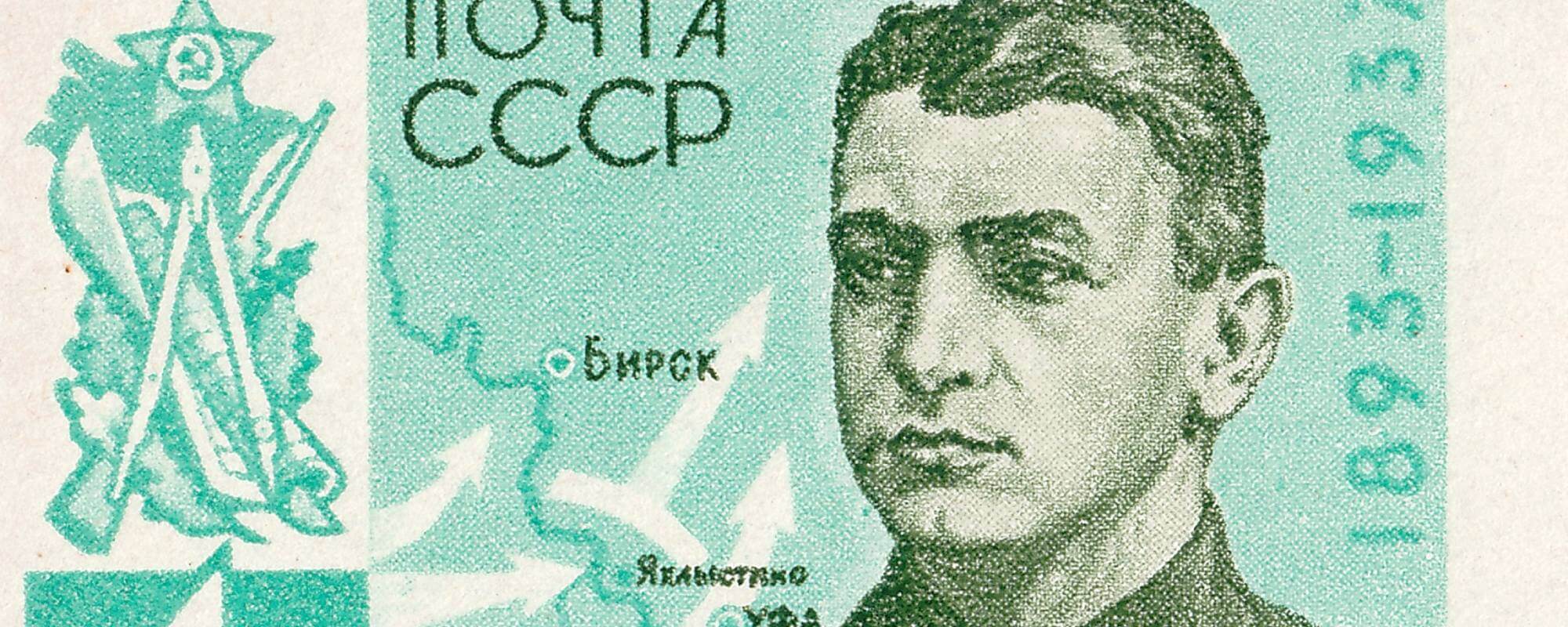

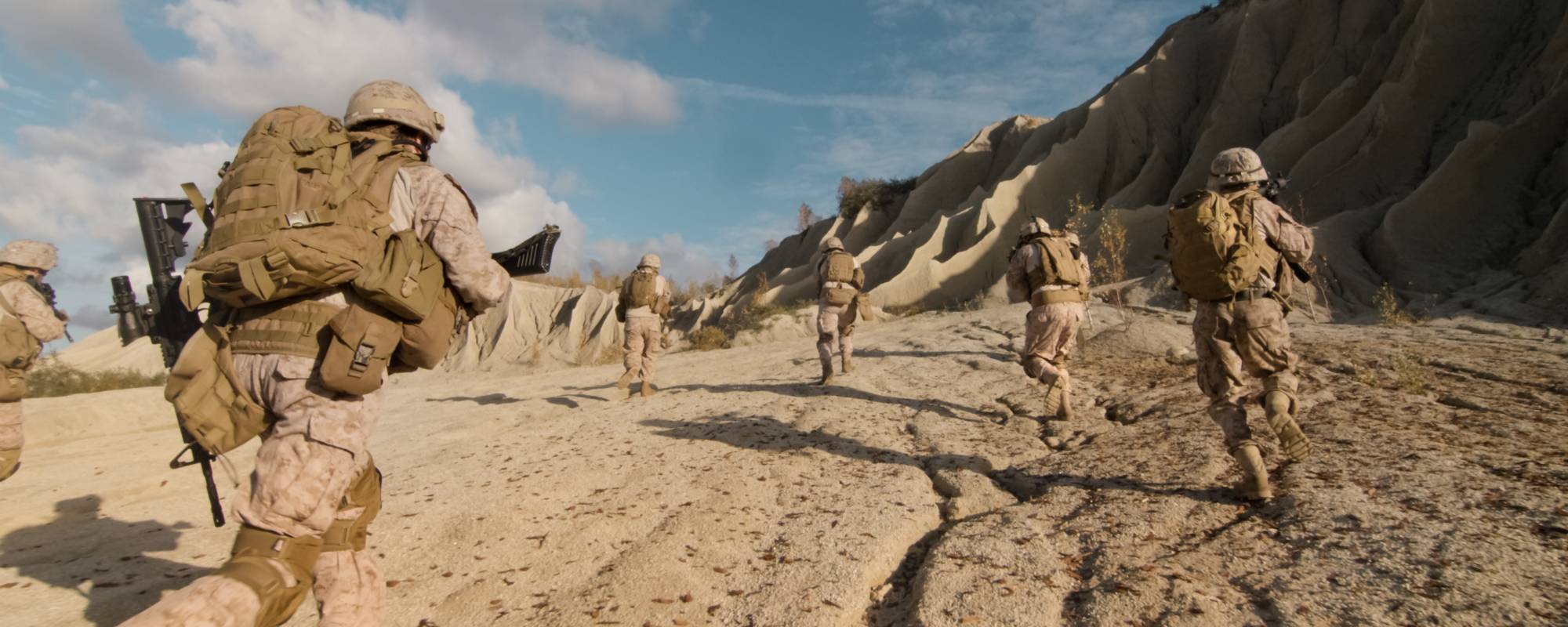
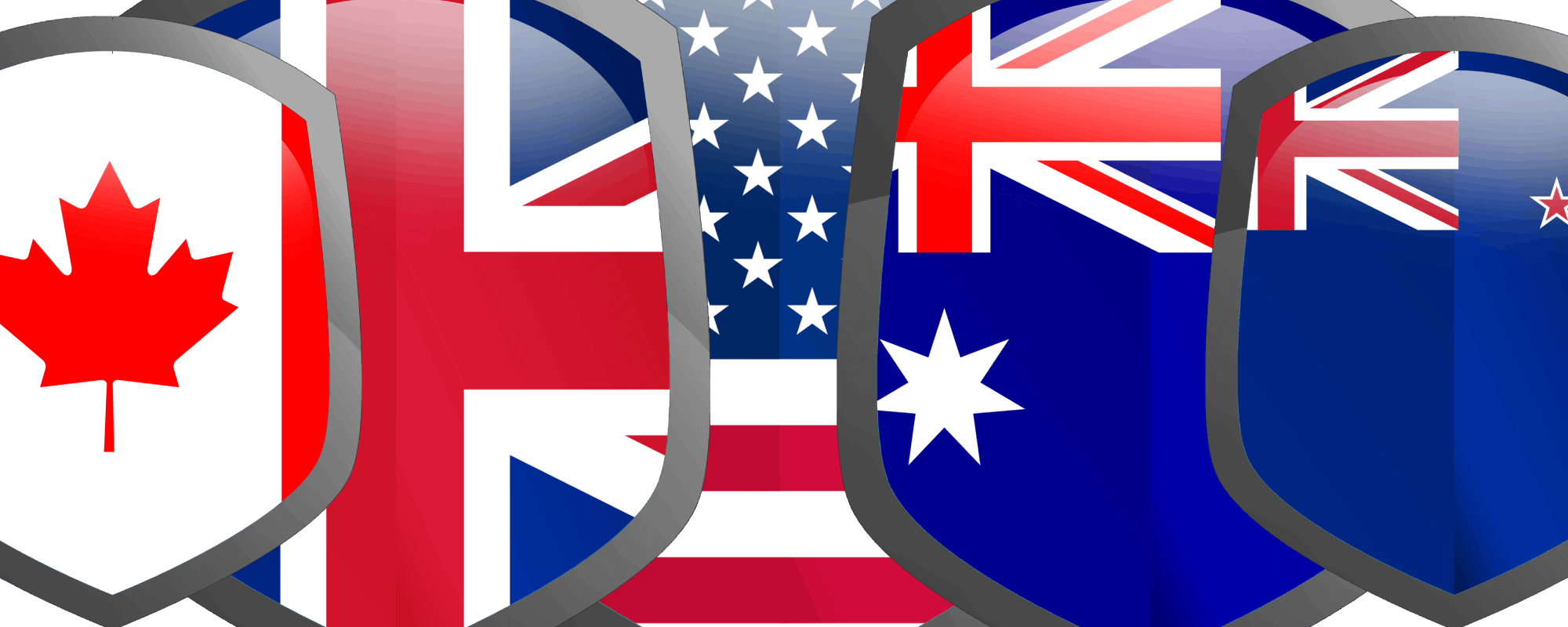



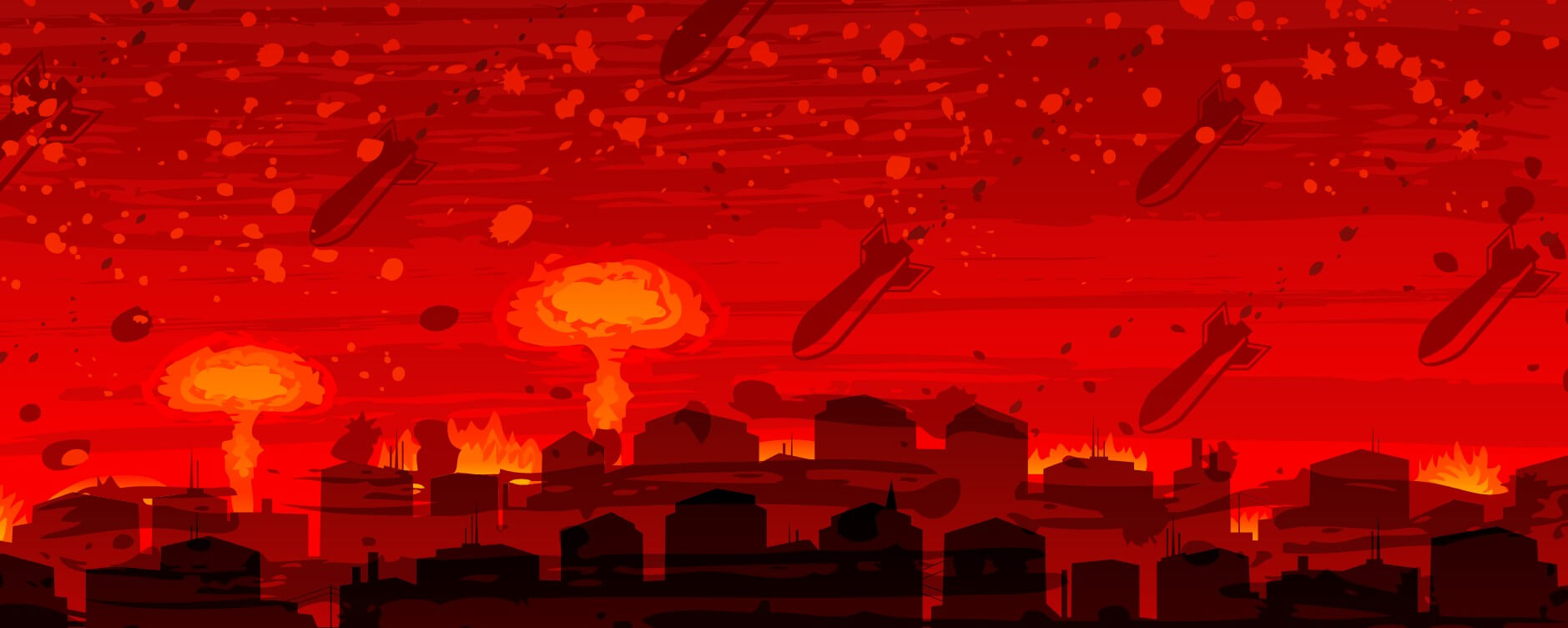
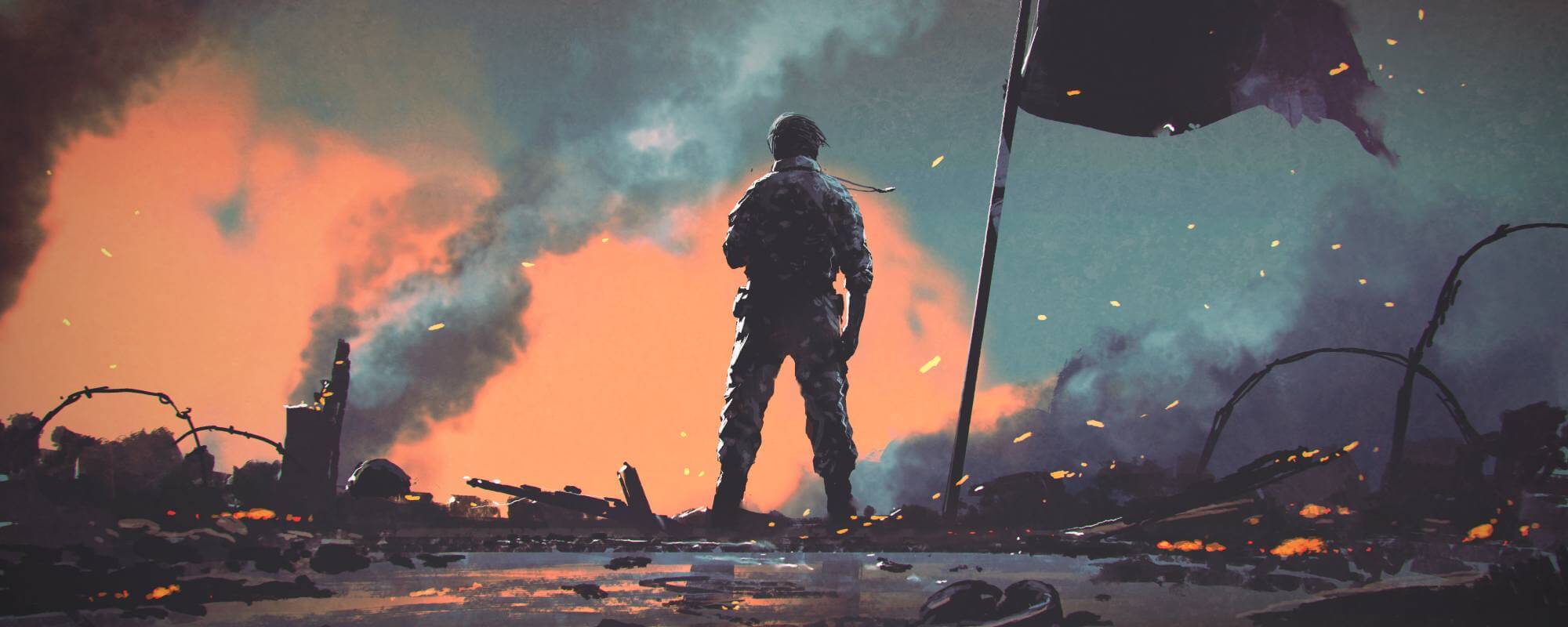
Comments
Start the conversation by sharing your thoughts! Please login to comment. If you don't yet have an account registration is quick and easy.